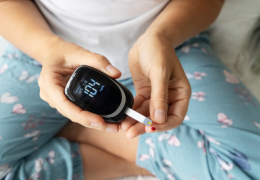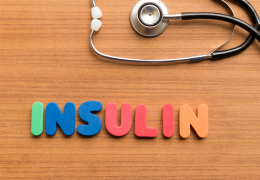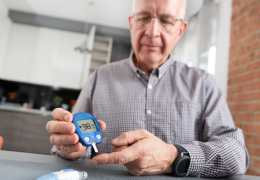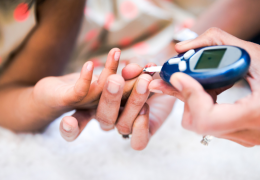Diabetes, or diabetes mellitus, is a condition that happens when blood sugar (glucose) levels become too high. So, what exactly is diabetes? What are its symptoms, causes, and how can it be treated? To help you understand more about diabetes, what are the signs and symptoms? And how can the condition be treated effectively? Feel free to take a look at the following summary to learn more about diabetes.
General Overview
What is diabetes?
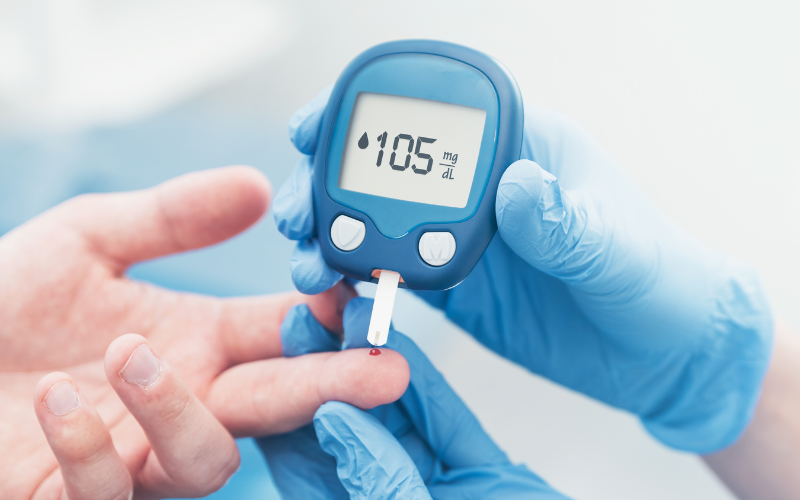
Diabetes (or diabetes mellitus) refers to a group of conditions that affect how the body uses blood sugar (glucose).
Glucose is essential for our health because it’s the main source of energy that keeps our body cells, especially brain cells, functioning properly.
The causes of diabetes can vary, depending on the specific type. However, regardless of which type of diabetes you have, the result is always high blood sugar levels, which can lead to a range of serious health issues.
Types of Diabetes
There are a few common types of diabetes, including Type 1, Type 2, and gestational diabetes.
Type 1 Diabetes
Type 1 Diabetes happens when your body’s immune system mistakenly attacks and stops your insulin production. People with Type 1 diabetes need to take insulin every day for the rest of their lives.
Type 2 Diabetes
Type 2 diabetes affects how your body uses insulin. Unlike Type 1, in Type 2, the body’s cells become resistant to insulin, meaning they don’t respond to it as well as they used to, even though the body still produces insulin.
Gestational Diabetes
Gestational diabetes occurs during pregnancy. It’s when your body becomes less sensitive to insulin during this time. However, not all pregnant women develop diabetes, and the condition often disappears after giving birth. Less common types of diabetes include monogenic diabetes, cystic fibrosis-related diabetes, drug-induced diabetes, diabetes caused by pancreatitis, pancreatic tumors, pancreatic surgery, and more…
Prediabetes
A normal fasting blood sugar level is between 70-99 mg/dL (3.9 – 5.6 mmol/L) [10]. If someone has diabetes, their fasting blood sugar level will be higher than 125 mg/dL (6.9 mmol/L). If your fasting blood sugar is between 100-125 mg/dL (5.6 – 6.9 mmol/L), your doctor might diagnose you with prediabetes.
This condition can easily progress to Type 2 diabetes, even if the person doesn’t show clear symptoms. Additionally, the risk factors for prediabetes and Type 2 diabetes are very similar, and include:
- Being overweight
- Having a family member with type 2 diabetes
- Low HDL cholesterol levels
- High blood pressure
- Having had gestational diabetes or giving birth to a baby weighing more than 4kg
- Polycystic ovary syndrome (PCOS)
- Over 45 years old
- Sedentary lifestyle
- Smoking
If you have prediabetes, your doctor will recommend changes to your lifestyle and diet to prevent the condition from progressing to Type 2 diabetes. If, after 3 months of making positive lifestyle changes, your blood sugar levels still haven’t returned to normal, you may need to start taking medication.
Symptoms
What are the signs and symptoms of diabetes?
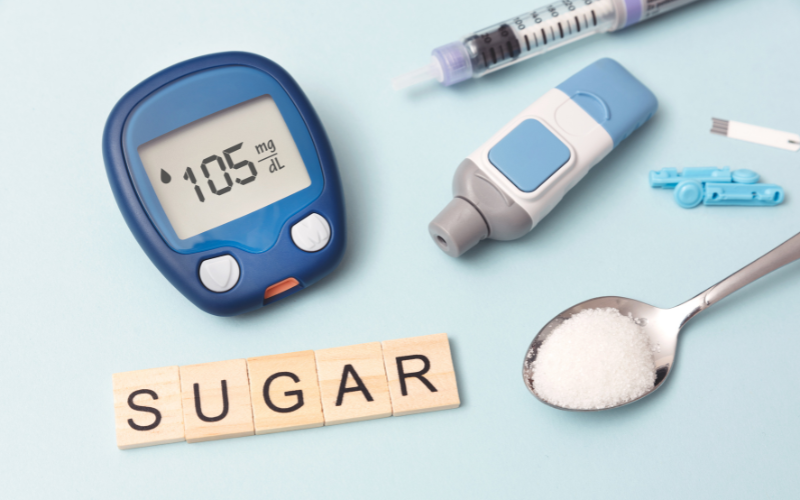
The symptoms and signs of diabetes can vary from person to person. However, most people with diabetes experience some common symptoms, such as:
- Feeling hungry and thirsty frequently
- Unexplained weight loss
- Frequent urination
- Blurry vision
- Extreme fatigue
- Wounds that don’t heal
Signs of Type 1 Diabetes
The signs of Type 1 diabetes may include:
- Extreme hunger
- Frequent thirst
- Unusual weight loss
- Frequent urination
- Blurry vision
- Fatigue
- It can also lead to mood swings.
Symptoms of Type 2 Diabetes
The common signs of Type 2 diabetes include:
- Feeling hungry and thirsty frequently
- Urinating often
- Unexplained weight loss
- Blurry vision
- Fatigue
- Slow-healing sores
- Numbness or reduced sensation in hands or feet
Diabetes can also lead to infections because high glucose levels weaken the body’s immune system (for example: tuberculosis, urinary tract infections, etc.). However, the scariest part is that Type 2 diabetes can progress silently, with no noticeable symptoms for a long time. It’s often discovered by chance during a routine health check-up or when complications of diabetes are already present.
Signs of Gestational Diabetes
Most women with gestational diabetes don’t show any symptoms. Doctors usually discover this condition during routine blood sugar tests or an oral glucose tolerance test, typically conducted between the 24th and 28th weeks of pregnancy.
In a small number of cases, women with gestational diabetes may experience increased thirst or urinate more frequently.
Causes
What causes diabetes?
Insulin is a hormone produced by the pancreas that helps lower blood sugar levels by “opening the door” for glucose molecules to enter cells and provide energy. In people with diabetes, this process is hindered by various issues.
Causes of Type 1 Diabetes
In people with Type 1 diabetes, the immune system attacks the insulin-producing cells in the pancreas, leading to a reduction in the levels of this hormone in the body. With too little insulin, glucose stays in the bloodstream instead of entering the cells, causing high blood sugar levels.
The exact cause of Type 1 diabetes is still not fully understood. However, some theories suggest that genetic and environmental factors may contribute to the development of the disease.
Causes of Type 2 Diabetes
In prediabetes and Type 2 diabetes, the body’s cells become resistant to insulin, and the pancreas can’t produce enough insulin to overcome this resistance. Instead of moving into the cells, glucose builds up in the blood, leading to higher blood sugar levels.
Just like Type 1 diabetes, the exact cause of Type 2 diabetes is still unclear. However, several factors have been shown to be related to this condition, including:
- Genetics
- Environmental factors
- Being overweight
- Over 45 years old
- Lack of physical activity
- A history of gestational diabetes or being diagnosed with prediabetes
- High blood pressure, high cholesterol, or high triglycerides.
Causes of Gestational Diabetes
During pregnancy, the placenta releases hormones to help sustain the pregnancy. These hormones cause the body’s cells to become resistant to insulin.
Normally, the pancreas produces enough insulin to overcome this resistance. However, sometimes the pancreas cannot keep up. When this happens, glucose cannot enter the cells, and blood sugar levels rise, leading to gestational diabetes.

The risk of developing gestational diabetes increases if you:
- Are overweight
- Are over 40 years old
- Have had gestational diabetes before or have given birth to a baby weighing over 4.5kg
- Have a family history of Type 2 diabetes
- Have polycystic ovary syndrome (PCOS).
Complications
Is diabetes dangerous?
High blood sugar can damage organs in the body. The higher the blood sugar level and the longer the condition lasts, the greater the risk of complications.
Some of the complications of diabetes include:
- Heart disease, heart attack, and stroke
- Nerve damage (peripheral neuropathy)
- Kidney disease
- Eye problems (retinopathy and vision loss)
- Foot issues like infections and non-healing ulcers, which can lead to amputations
- Skin conditions like bacterial and fungal infections
- Depression
Most women with gestational diabetes have healthy babies. However, it’s still important for expectant mothers to learn about the potential complications to protect both themselves and their little ones from any unexpected risks.
Complications in babies born to mothers with gestational diabetes can include:
- Overgrowth (large baby) leading to difficulties with natural childbirth and an increased risk of cesarean section
- Low blood sugar (neonatal hypoglycemia)
- Increased risk of developing Type 2 diabetes as adults
- Infant death
Mothers may also face complications, such as:
- Preeclampsia
- Gestational diabetes in future pregnancies
Treatment Methods for Diabetes
“Can diabetes be cured?” is probably a question many people are curious about. The truth is, diabetes cannot be cured. However, treatment methods can help control symptoms and prevent serious complications, allowing you to live a normal life.
Depending on the type of diabetes you have, your doctor may recommend methods to manage blood sugar, use insulin, or take oral medications for diabetes.
A healthy diet, maintaining a reasonable weight, and regular physical activity also play important roles in effectively managing the condition.
What are some home methods to support diabetes control and treatment?
- Healthy Eating: You’ll need to focus on a diet rich in fruits, vegetables, lean proteins, and whole grains. At the same time, reduce saturated fats, refined carbohydrates, and sugary foods.
- Physical Activity: Exercise can help lower blood sugar levels by reducing insulin resistance in your cells, making it easier for glucose to move into the cells.
What are the treatment methods for Type 1 and Type 2 diabetes?
What’s the solution for Type 1 diabetes?
The main treatment for Type 1 diabetes is artificial insulin. It replaces the hormone that the body is unable to produce.
There are four common types of insulin, based on how long they work:
- Rapid-acting insulin starts working within 15 minutes and lasts for 3 to 4 hours.
- Short-acting insulin begins working within 30 minutes and lasts for 6 to 8 hours.
- Intermediate-acting insulin starts working in 1-2 hours and lasts for 12 to 18 hours.
- Long-acting insulin starts working a few hours after injection and lasts for 24 hours or longer.
Do you know how to treat Type 2 Diabetes?
Diet and exercise can help some people manage Type 2 diabetes. If lifestyle changes aren’t enough to lower your blood sugar levels, you may need medication.
There are several non-insulin medications that can help lower blood sugar, such as:
- Alpha-glucosidase inhibitors
- Biguanides
- DPP-4 inhibitors
- GLP-1 receptor agonists
- Glinides
- SGLT2 inhibitors
- Sulfonylureas
- Thiazolidinediones
People with Type 2 diabetes are typically treated with medication at first. However, as the disease progresses, if other treatments can’t help control blood sugar levels as expected, doctors may recommend insulin to help manage daily blood sugar levels. In the early stages, patients may start with basal insulin or premixed insulin combined with the oral medications previously used.
Basal insulin is a long-acting insulin that lasts about 12 to 24 hours, depending on the type you use. Using basal insulin helps people with Type 2 diabetes manage their blood sugar levels, even while sleeping, and offers more flexibility when it comes to meal times, improving disease management.
Basal insulin can also be combined with other treatments for better results. You should consult your doctor to find the most suitable treatment plan for you and always follow the treatment plan carefully to avoid the risk of an insulin overdose.
How to Manage Gestational Diabetes?
If you’re pregnant and diagnosed with gestational diabetes, it’s important to monitor your blood sugar levels multiple times a day. If your blood sugar is high, you’ll need to adjust your diet and exercise routine according to your doctor’s advice to help lower your blood sugar levels.
Prevention
What can help prevent diabetes?
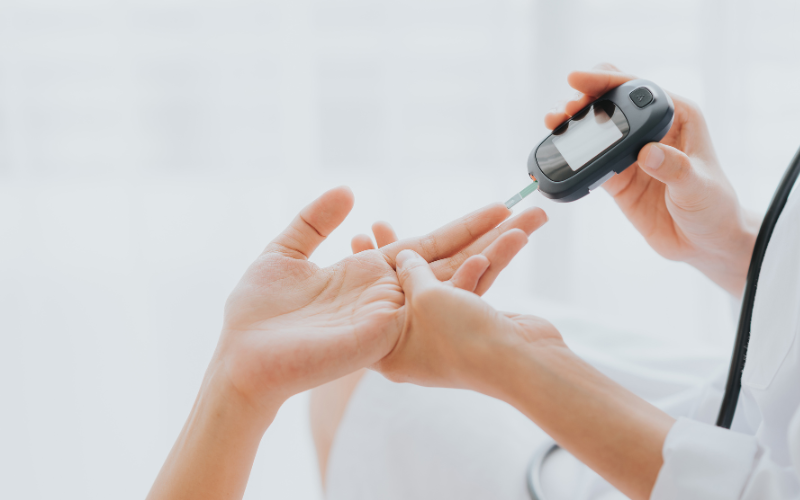
Type 1 diabetes cannot be prevented. However, adopting a healthy lifestyle can help reduce the risk of developing the disease and support the management of prediabetes, Type 2 diabetes, and gestational diabetes:
- Eat foods that are good for your health. Choose foods that are low in fat and calories, and higher in fiber. Eat plenty of fruits, vegetables, and whole grains.
- Get more physical activity.
- Lose weight if you’re overweight.
However, make sure not to try losing weight while you’re pregnant. It’s best to talk to your doctor about how much weight gain is healthy during pregnancy.
We hope this information gives you a clear overview of diabetes. Although this disease can’t be completely cured at the moment, don’t worry too much. With your doctor’s treatment plan and a healthy lifestyle, you can improve your quality of life and manage the condition effectively.


